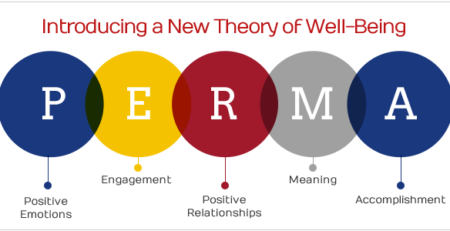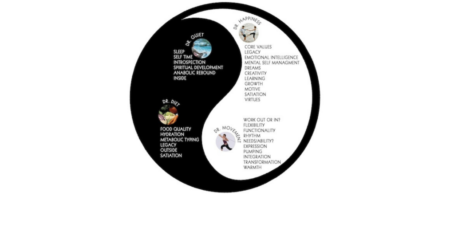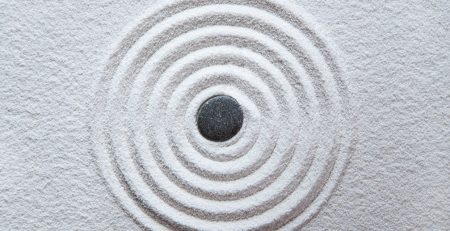How to Boost your Happy Chemicals
Knowledge is power and our mind is our greatest asset. Not our brain, but our mind. That is, by the way, an entirely different topic which I discussed previously in another article earlier this year.
Now back to this article’s topic. It is important to not only strive to master our own mind, through mindfulness or any other suitable practice, but also to understand the basic mechanics of our brain and how it operates from a neurochemical perspective.
Speaking from experience, I can say that by being aware of our brain’s neurochemical processes we are more empowered to find healthier ways to boost our happy chemicals, rather than being hijacked (or even enslaved) by them. Being aware of those concepts makes us less susceptible to the traps and pitfalls of instant gratification.
Dr. Loretta Breuning, Ph.D , the founder of the The Inner Mammal Institute – which helps people build their power over their mammalian brain chemistry – explains in her book Habits of a Happy Brain how the four happy chemicals work, what their side effects are, and how we can retrain our brains to boost those happy chemicals in a healthy (legal!) and sustainable manner. Below is a 2 minute video animation, where Breuning gives an overview of our happy chemicals, the mammalian brain’s neuro pathways and how the brain’s reward system contributes to our survival.
Below are the definitions of the 4 happy chemicals as suggested by Dr. Breuning.
Dopamine | The joy of finding what you seek
Dopamine is the good feeling that a reward is at hand. It’s your brain’s signal that you are about to meet a need. Dopamine makes you jump for joy when you reach a goal or get a toy. Dopamine motivates the investment of energy in steps toward rewards. Each step closer stimulates more, but the dopamine stops once the need is met. Dopamine feels great, so you naturally try to get more; to do this, your brain scans for the next opportunity to meet a need. Dopamine motivates constant survival action by making it feel good. Each brain defines survival rewards with neural pathways built from its past dopamine surges.
Endorphins | The oblivion that masks pain
Endorphins mask pain with a euphoric feeling. They promote survival by easing an injured mammal’s escape from danger. But the endorphins stop after only a short time, because pain is a useful signal that tells us an injury needs protection. Endorphins evolved for emergencies only. Our ancestors escaped from predator’s attacks because the endorphins made them feel good when they ran back. We are NOT designed to inflict pain on ourselves and enjoy it – that creates a bad loop because more pain is always needed to feel good. Fortunately, you get a small endorphin rush from a belly laugh, or healthy exertion; and a bit is enough.
Oxytocin | The comfort of social alliances
Oxytocin creates the positive feeling of social trust. Oxytocin flows when you stick with the herd. A mammal can lower its guard when trusted others are near. You might want this feeling all the time; but trusting everyone would not promote survival. The mammalian brain evolved to make careful decisions about when to release oxytocin. Common enemies motivate mammals to seek safety in numbers, and their brains reward them with a good feeling. Neurons connect when oxytocin flows, which wires you to trust others in contexts that have triggered oxytocin for you before.
Serotonin | The security of social importance
Serotonin is the good feeling of social power. Serotonin swells your chest with pride when you get respect and don’t need to hide. We hate to acknowledge this urge in ourselves, though we easily see it in others. Serotonin is your brain’s signal that it’s safe to assert yourself in the presence of rivals. It’s not aggression, but the nice calm feeling that you have and the strength necessary to meet your needs. Serotonin is quickly metabolized, so a mammal always needs to do more to get more. But the brain chooses its opportunities carefully because a misguided assertion can become a survival threat.
And finally, some tips to healthily boost your happy chemicals:
Are you ready for a re-wiring project? As Dr. Breuning said, you can re-wire your brain to turn your happy chemicals in new ways. Don’t expect to rewire yourself completely overnight. Choose one healthy way to stimulate your happy chemicals and repeat it for 45 days, no matter what.
Learn more:
- Meet Your Happy Chemicals | Book summary
- Habits of a Healthy Brain | Book
- Do You Need More Happy Brain Chemicals? An interview with Loretta Breuning
- Dr. Loretta Breuning | Podcast
- Huffpost | Hacking into your happy chemicals
- The Neurochemicals of Happiness
- Dr. Loretta Breuning | Inner Mammal Institute SlideShare













Leave a Reply